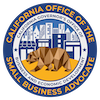December 20, 2011
As the end of the year approaches, small business owners’ thoughts naturally turn to ways they can build more profitable businesses in the coming year. One simple way to improve your business’s operations is to closely monitor your profit and loss statement.
What is a profit and loss statement, and what can it tell you about your business’s operations?
“A profit and loss statement is a financial statement that summarizes your business’s revenues, costs and expenses during a specific period of time, typically a fiscal quarter or fiscal year,” explains SBDC Loan Advisor Bill Sorotsky. Also known as a statement of profit and loss, income statement or income and expense statement, the P&L statement provides information that shows how your company can generate profit by increasing revenue and reducing costs. 
In what situations does a business owner need to create a P&L statement?
If you are applying for an SBA guaranteed loan, Sorotsky says, the SBA will require a statement of profit and loss within 90 days of submitting your loan application. “Commercial banks will also want to see your P&L because it provides evidence of historical and current profitability, establishing your business’s cash flow and your ability to repay the loan,” he explains.
If you are reviewing your cash flow statement regularly and cash flow is doing fine, why do you also need to review a P&L statement?
Although the two types of financial statements are related, Sorotsky notes that there are also important differences. “A P&L is based on accruals, as opposed to the cash flow statement, which is stated on a cash basis,” he explains. “One statement feeds off the other; they are interrelated after adding back non-cash and non-recurring items to the P&L.”
What are the benefits of creating a P&L statement?
A P&L statement gives you a clear picture of what operations look like given a certain level of revenues and expenses over a certain period of time,” says Sorotsky, who warns, “Operating without one is like operating in the dark.”
How often should you review your P&L statement?
While the frequency can vary depending on your business, at a minimum, Sorotsky recommends a small business review its P&L statement monthly.
How far out should your P&L statement project?
Generally, Sorotsky advises, the P&L statement should project one to three years into the future. If you are applying for a loan, both conventional and SBA guaranteed loan applications will require three years of financial statements. For the first year, create a monthly P&L statement; for the second and third years, quarterly projections will suffice.
What tools can help you create and manage your P&L statement?
Sorotsky says QuickBooks Accountant 2012 and Intacct [NOTE: SPELLING IS CORRECT] Financials and Accounting are two good programs to try.
What warning signs should you watch out for on your P&L statement?
Increasing sales and declining profits, stagnant sales, increasing non-variable expenses (such as utilities, salaries and rent), increased depreciation (with no added fixed assets) and increased cost of goods sold (COGS) are all signs of problems, Sorotsky says. To determine if your profits are within the appropriate range for your industry, he recommends obtaining benchmarking information from the Small Business Development Center, as well as from D&B industry reports and Risk Management Association annual statement studies.
Once you start regularly monitoring your P&L, how can you use the information to better manage and grow your business
“Good accounting software can improve financial, managerial and operational reporting and analysis, improve cash cycles, shorten days sales outstanding, optimize cash management, reduce operating costs and increase business value,” says Sorotsky. He adds that for best results, you should review your financials with your CPA on a monthly basis.
“Good management comes with experienced managers with strong industry knowledge,” Sorotsky adds. “There are no shortcuts.” He advises using reputable CPAs and bringing an experienced CFO on board as soon as possible in your business’s development. The SBDC can also help by reviewing your business’s financials, providing advice and training you on how to use financial statements, accounting software and other tools to help your company grow.
Rieva Lesonsky is founder and President of GrowBiz Media, a media company that helps entrepreneurs start and grow their businesses. Before launching her business, she was Editorial Director of Entrepreneur Magazine. Follow Rieva at Twitter.com/Rieva, read her blog at SmallBizDaily.com, and visit her website SmallBizTrendCast to get the scoop on business trends and sign up for free TrendCast reports.





